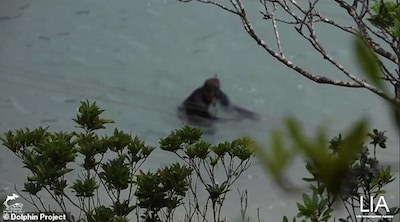On any given day, something like the scene from the photo above will show up in my Twitter feed. This report is from Taiji, Japan, in October 2020. This diver / “fisherman” is seen here holding a baby Risso’s Dolphin under water to prevent him or her from taking a breath, while dragging the helpless infant towards the tarps, to be slaughtered a few moments later. This along with any of the rest of the pod who weren’t selected for a life in captivity. His mother may or may not still have been alive and able to witness this at the time. Needless to say, the trauma of the event had to have been as horrific for this pod of dolphins as it would be for you and me.
The truth is that we will continue to see reports of these kinds of incidents for some time to come – at least for as long as there is so much money to be made from these hunts. Someone will be willing to drive dolphins into a cove, net them off, and separate the “pretty” ones from their pods (family units). Someone will be OK with employing the violence necessary, and to treat these highly-intelligent sentient beings as nothing more than commercially-valuable commodities. Someone will recognize the opportunity for some incidental profit from the killing of those not chosen for captivity – targets of convenience at the hands of ruthless men. A small supplement to the lucrative revenue stream made possible by the global demand for captive dolphins. Big money means an opportunist ready to take advantage, and willing to perform the vile actions necessary to profit from them.
And some of these men will always be willing to add cruelty above and beyond what’s strictly necessary to implement an already barbaric process (Japan’s own laws mandating that mammals be killed humanely notwithstanding). To do things like hold a baby dolphin underwater when it tries to surface for a breath, while still surviving family members hear its vocalizations from nearby, helpless to intervene in any way. You’ve clearly moved beyond ultra-callous indifference to suffering, and well into the realm of sadism, with such an action. In an inherently cruel industry, such people can be found.
But we do have a way to stop them. To take away their power. To remove the lifeblood of the industries in which they’re able to operate, and to profit – often quite handsomely.
We can remove the economic incentives. We can make it unprofitable for them to do what they do. We can kill the opportunity for evil by removing the lifeblood of the industries that sustain them.
A primary function of our team at the Canadian Cetacean Alliance is the raising of awareness of issues that impact the lives, freedom and wellbeing of whales and dolphins, anywhere in the world, among the general public. Of course, a key objective of this is the legislative successes that come with a well-informed voting base –such as Canada’s bill S-203 in 2019. But another critical goal is the market impact that results from such heightened awareness.
People who are knowledgeable about the consequences of their purchases make very different buying decisions. For some industries, a well-informed public represents an existential threat to a previously viable business model. That is what we’re talking about here. Horrors such as the one described above will become untenable once a majority of the public sees that dolphin in the show pool as what it is – a beautiful being that has been violently torn from his pod and threatened with starvation if he fails to perform a role some human has defined for him. The public will one day speak with their dollars, pesos and yen to deliver a clear message to these industries.
We at CCA are targeting primarily three areas.
First – end the captivity of whales and dolphins. No butts in the seats at SeaWorld – no profit in holding captive cetaceans. Whales and dolphins will continue to face other threats, but a shortened life of stress and boredom in a tiny concrete tank, spent entertaining humans with tricks that could be learned by an animal with much less cognitive ability than they possess, will not be among them. Blackfish hurt the industry significantly. We’re going to see that process through to its logical conclusion.
Secondly – end the ability of seafood companies to sell product until they can reliably certify that dolphins have not died in their nets as ‘by-catch’. Today, as part of the usual business of harvesting from the sea, dolphins die by the many tens of thousands per year because fishing boats, and the companies that own them, lack much incentive to incur the extra costs that would come with this. We – the purchasers of seafood products – will communicate to them that we are not only willing to pay more for our seafood, but are entirely unwilling to consume a product that comes at the price of a dolphin’s life. Not only will we demand of our governments that they require higher standards for labeling and dolphin-friendly certification, we will deliver the following message to producers: “If you want to sell me a fish, you will first prove to me that no dolphin already paid for that fish with his life.”
Thirdly – and this one is less direct – we will create an economic incentive for the people and government of the Faroe Islands to put an end to the Grindadráp (“The Grind”) which so cruelly ends the lives of so many dolphins and pilot whales on their beaches. I say less direct because, bizarrely, there doesn’t seem to be much financial incentive for the hunts themselves, in this case. They don’t take advantage of the lucrative trade in live dolphins which sustains hunts such as Taiji’s. Like Japan, Faroe is a rich country (actually a self-governing territory of Denmark), and no one there needs the meat. Nobody in Faroe is hungry, and whale meat frequently ends up rotting in dumpsters throughout the islands.
What perpetuates this practice appears to be some kind of blood lust, and a kind of sick rite of passage for Faroese males eager to prove themselves. It comes across to outside observers as an act of defiance by a sick culture, seemingly cut off from the rest of Europe even more so culturally and ethically than they are geographically. (The Faroe Islands are about 320 kilometers north of Scotland, about halfway between Norway and Iceland, out in the North Sea.) Despite widespread international condemnation, Faroese authorities seem to be determined to preserve the practice for future generations. Interestingly, as a part of the E.U., the Grind isn’t even legal, as it fails the regulatory requirements of that political entity.
So how do we cut the financial support for this brutal and barbaric practice? We kill the lucrative tourist industry to these islands. The Faroese archipelago is an enchanting and attractive destination, but they don’t include any mention of the Grind when they promote themselves, obviously. We need to make that connection very clear in the public’s mind. Also, we can boycott their primary exports – especially their salmon and other fish products. And, very importantly, we need to let them know why we’re doing it. At some point, decision makers will have to recognize that if they want to send exports abroad, if they want tourists to return and the cruise lines to resume stops in the islands – in fact if they want the rest of Europe and the world to take them seriously as a civilized country – they will need to make the Grind a part of history.
For The Orca’s Voice,
Phil and the CCA Team



Leave a Reply